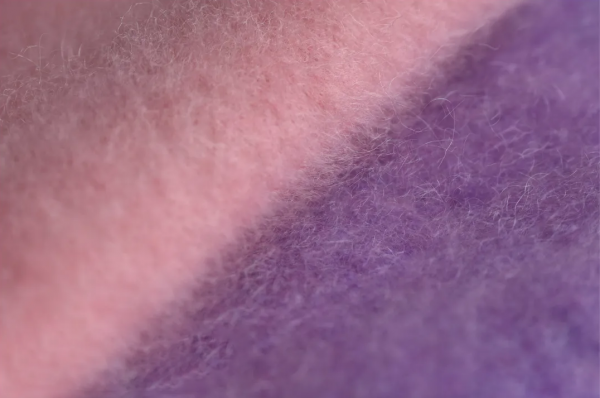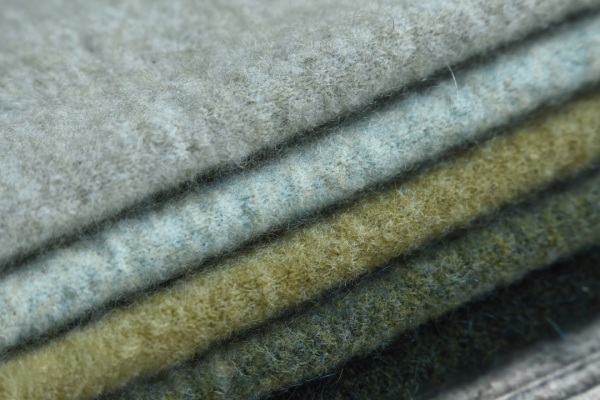In the realm of luxury textiles, the allure of mohair stands unmatched with its brilliant sheen, exceptional warmth, and supple texture. The elevated standing of mohair in both the fashion and textile industries owes much to its unique provenance. The geographic origins fundamentally influence the intrinsic characteristics of mohair, shaped by local climatic conditions, topography, and cultural traditions, carving out the expansive mohair market. This exploration delves into the critical significance of geographic roots in selecting a reputable mohair sweater manufacturer, underscoring the elements that determine mohair quality along with considerations for sustainability and ethical production.
The Critical Role of Source Origin in Choosing a Mohair Sweater Manufacturer
Embarking on the quest to find a distinguished mohair sweater manufacturer involves recognizing the impact of the source region on the fabric’s quality and its production’s environmental consciousness. At the forefront of global mohair production, South Africa, alongside the United States—Texas, in particular—is celebrated for its premium mohair outputs. The unique environmental and geographical characteristics of these regions lend signature qualities to their mohair, such as unparalleled luster and durability.
Nestled within South Africa’s Karoo, a semi-arid landscape fosters the cultivation of mohair known for its remarkable sheen and resilience. Texas, with its distinct climate and pastoral methodologies, produces mohair celebrated for its brilliance and toughness. Beyond these leading producers, the global stage of mohair production is dotted with other regions, contributing to the diverse mohair market. Acknowledging the varying environmental influences is essential for informed mohair sourcing decisions.
The process of manufacturing mohair sweaters transcends mere fiber collection, encompassing practices that safeguard the well-being of Angora goats, preserve grazing areas, and support farming communities. The adoption of standards like the Responsible Mohair Standard (RMS) highlights the industry’s dedication to environmentally friendly and morally upright practices, facilitating informed decisions for consumers and businesses.
How to Evaluate the Quality of Mohair Sweaters?
Delving deeper into the characteristics that define the quality of mohair can significantly enhance a buyer’s ability to discern the premium from the average. Understanding these quality markers is not just about recognizing a superior product but understanding the craftsmanship and care that goes into its creation. The distinction between kid mohair and adult mohair is particularly crucial, as it directly impacts the texture, appearance, and overall quality of the fabric.
-
Kid Mohair vs. Adult Mohair in Mohair Sweater Manufacturing
The age of the Angora goat at the time of shearing has a significant impact on the quality of the mohair produced.
Kid Mohair: This type of mohair comes from the first or second shearing of an Angora goat, usually occurring when the goat is under six months old. Kid mohair is prized for its exceptional softness and ultra-fine fibers, which typically measure smaller in diameter compared to adult mohair. Additionally, kid mohair boasts a higher luster, a factor that makes it highly sought after for luxury garments and accessories. The combination of softness, fineness, and sheen renders kid mohair the ideal choice for premier fashion items that demand a touch of softness and elegance.
Adult Mohair: Extracted from the later shearings of mature Angora goats, adult Mohair is characterized by its strength and durability. Though generally coarser than kid mohair, adult mohair fibers are still incredibly versatile and valuable in the textile industry. This mohair variant offers increased robustness, making it suitable for items that require a higher degree of durability such as outerwear, upholstery, and other textile applications where wear resistance is paramount.

-
Specific indicators for evaluating the quality of a manufacturer’s mohair
Identifying high-quality mohair involves understanding its distinctive classification which differs from cashmere. Here’s a simplified guide:
1. Fiber Diameter and Length: The Hallmarks of Mohair Textile Quality
The diameter and length of mohair fibers play a pivotal role in determining the overall quality and feel of the mohair textile. Finer fibers, typically with a smaller micron count, result in a smoother, softer, and more luxurious fabric. The length of the fiber also matters, as longer fibers are easier to spin into a finer yarn, contributing to the strength and the silky texture of the final product. These longer, finer fibers are less prone to breaking and tangling, leading to a higher quality textile that not only feels better against the skin but also wears well over time, resisting pilling and maintaining its integrity.
2. Luminosity: The Signature Sheen of High-Grade Mohair
One of the most coveted attributes of mohair is its intrinsic luster. This luminosity is not merely a superficial quality but a testament to the health of the Angora goats and the conditions under which they are raised. High-grade mohair fabrics exhibit a vibrant sheen, which is a direct result of the fiber’s structure, allowing it to catch and reflect light beautifully. This sheen is one of the reasons mohair is so highly valued for luxury fashion items, as it adds depth and richness to colors, making them appear more vivid and dynamic.
3. Crimp: Enhancing Fabric Resilience and Shape Retention
The natural crimp in mohair fibers contributes significantly to the fabric’s elasticity. This crimp, or natural wave, allows the mohair to be spun into yarns that have inherent stretch, enhancing the fabric’s resilience and enabling it to better retain its shape. Garments made from mohair with high crimp will not only be more comfortable to wear but will also maintain their fit and form over time, resisting stretching and sagging.
-
Practical Tips for Physical Assessment
1. Touch for Texture: The texture should be smoothly sophisticated for kid mohair, with a luxurious hand feel, while adult mohair will be more robust but should still maintain a premium feel without coarseness.
2. Inspect for Luster: Quality mohair, especially kid mohair, should brightly reflect light, demonstrating its characteristic sheen more prominently than adult mohair.
3. Stretch Test: High-quality mohair products will rebound to their original shape, demonstrating good elasticity. Kid mohair, in particular, should show exceptional suppleness.
4. Resistance to Pilling: Rubbing the fabric lightly to check for pilling will reveal the resilience of the fibers. Kid mohair typically has lower tendencies to pill due to its fine texture, while adult mohair’s sturdier fibers also resist pilling but may require more care to maintain their appearance.
Authenticating Ethical and Sustainable Mohair Sweater Manufacturing
Certifications play a crucial role in validating the ethical sourcing and quality of mohair.
The Responsible Mohair Standard (RMS) ensures that Mohair comes from farms that practice environmental sustainability and ethical treatment of animals. By choosing RMS-certified mohair, buyers are assured of the ethical considerations and high standards maintained in the production process.
Looking for these certifications when selecting mohair products can provide buyers with additional assurance regarding the sustainability and ethical production of their mohair textiles, aligning luxury with responsibility.
Conclusie
Selecting the right mohair sweater manufacturer is a nuanced process that goes beyond simple price comparisons. It necessitates a considered analysis of how geographic origin influences mohair quality and a steadfast commitment to sustainable and ethical production practices. Armed with the knowledge of ethical and sustainability standards, such as the Responsible Mohair Standard, making an informed selection supports a luxury that honors excellence in quality while being mindful of the planet and its denizens. Thus, the choice of a mohair sweater manufacturer is an informed expedition, harmonizing the principles of quality, ethics, and sustainability within the dynamic domain of mohair production.




 English
English Deutsch
Deutsch Français
Français Italiano
Italiano Español
Español Русский
Русский Polski
Polski Nederlands
Nederlands Svenska
Svenska


